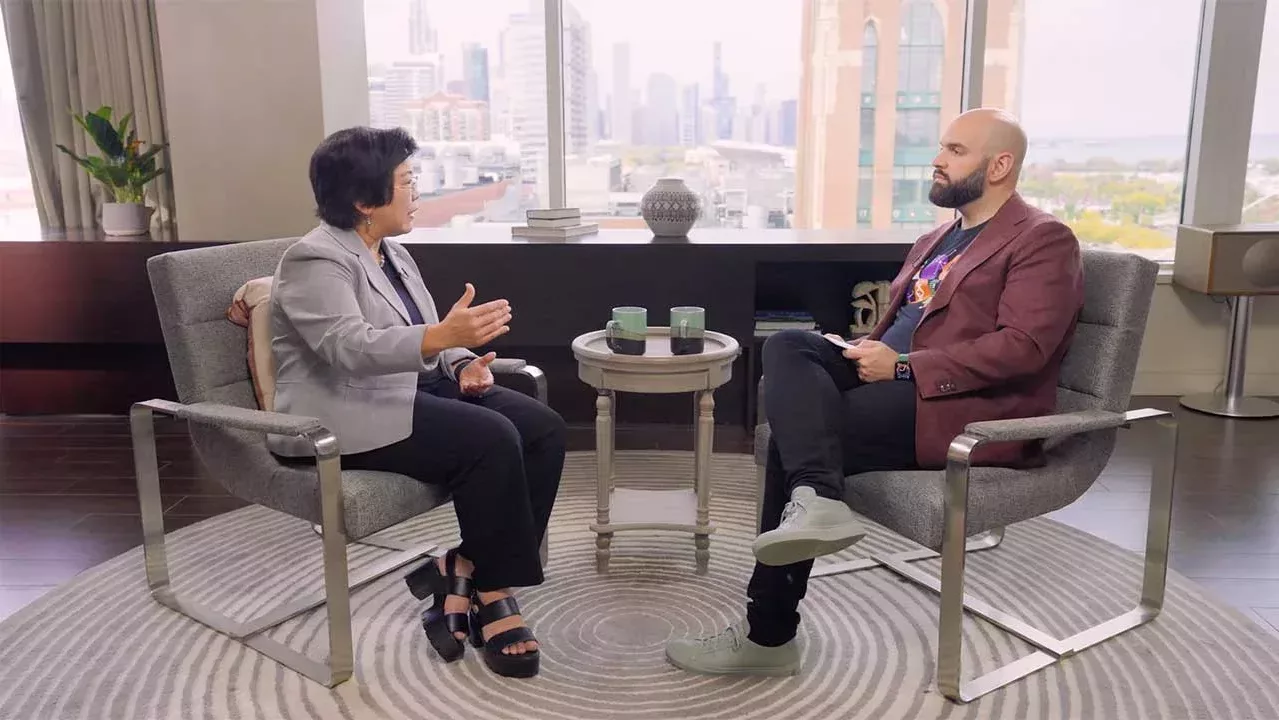How transformation in healthcare is crucial to help children
Often, healthcare’s greatest challenges are framed around aging and adulthood, but what about our smallest, most vulnerable cases? Pediatrics shares some common obstacles with healthcare writ large, but the impacts of healthcare crises — from obesity to depression — affect children differently.
In this episode of The Schema Season 2, Dr. Sandy Chung, Medical Director of Informatics at Children’s National’s Pediatric Health Network and CEO at Trusted Doctors, chats with Arcadia CEO Michael Meucci about how a transformation in care is crucial to helping children reach their potential.
Tune in to the full series or watch the complete episode, and read on to hear more about how early intervention, creative solutions, and mental health resources could transform the path to adulthood from treacherous terrain to supported stepping-stones.
Intervene early, change the future
“We have data that shows that if we intervene early, we can prevent things like cancer. We can prevent things like diabetes. We could prevent things like obesity. And if you think about that, if you were able to prevent obesity, cancer, diabetes, all of those things, the trajectory of the healthcare costs goes way down in the long run. But that return on investment isn't in a 12-month period, which is where a lot of payers are operating. That payoff is going to be in decades, right? So designing a system that recognizes that is the challenge.”
— Sandy Chung, Medical Director of Informatics, Children’s National’s Pediatric Health Network CEO, Trusted Doctors
In value-based care, the meaning of “value” is clear. We can measure it in dollars saved and diagnoses avoided. It’s an approach that uses preventative care to ultimately spend less over a patient’s lifetime, achieving healthier outcomes and healthier bottom lines (because medical spend is less when issues are treated before they start). When that patient is under 18, the investment becomes a little harder to pinpoint, but according to Dr. Chung, that’s the time when it’s most advantageous.
The problem is it can be hard to measure. It’s clear that preventing childhood trauma leaves adults healthier and less prone to certain mental health challenges, but getting more specific requires data that’s difficult to glean. What does it mean, ultimately, when a child sleeps well, eats well, and is housed securely? It’s a question healthcare experts are hoping to answer in real-time, but the people who know best are frontline providers and experts like Dr. Chung.
As we learn more about how early life affects adults later on, Dr. Chung emphasizes that the time to act is now. Healthcare organizations and payers alike can operate from a place of both empathy and economic savviness.
From lessening poverty to providing opportunities for growth, “It takes an investment in the public good,” she says.
The consequences of inadequate mental healthcare are dire
“During that four-week period, he ran out of his medicines. And when he ran out of his medicines, he got into a fight in the parking lot near my office. Unfortunately, he had a gun, and during that fight, he actually shot and killed someone. So that 14 year old went to jail, and that man lost his life. Could that have been prevented? Potentially. What we had was a healthcare system that wasn't designed for this. We didn't have enough child psychiatrists, we didn't have primary care trained. We didn't have Medicaid paying for medicines that that child desperately needed. So we really need a redesign.”
— Sandy Chung, Medical Director of Informatics, Children’s National’s Pediatric Health Network CEO, Trusted Doctors
People frame decisions as “life or death” to emphasize their seriousness, but in healthcare, the meaning is literal — depriving the country’s youth of critical mental health services has consequences that ripple through communities. Inadequate healthcare, SDoH factors, and a tattered social safety net result in violence, whether it’s an individual’s suffering or an entire country’s grief.
The solution, Chung says, is a redesign of the systems that are failing children. Playing telephone — from primary care physician, to psychiatrist, to Medicaid, and sometimes back again — simply doesn’t cut it. The chances for that communication to fall through the cracks are too high, and the shortage of pediatric psychiatrists only adds to this conundrum.
One first step? Training primary care physicians who treat children in the basic framework of common diagnoses like depression and anxiety, so when a young patient comes in with the symptoms, it can be spotted (and treated), not left to worsen.
Collaboration and innovation in pediatric medicine
“We set up a statewide phone number so that any primary care provider seeing kids in our state could pick up the phone and speak to a child psychiatrist within 30 minutes, to get help on how to take care of a child in front of them, and care navigation resources, to help that family find care. We did that, and then several other states have programs like this now.’”
— Sandy Chung, Medical Director of Informatics, Children’s National’s Pediatric Health Network CEO, Trusted Doctors
Where a crisis looms large, Dr. Chung and her colleagues at Children’s National Hospital decided to veer off the beaten path. The results were heartening: a first-of-its-kind network that connects primary care pediatricians with psychiatrists. This cuts down on the red tape of referrals and waitlists, and meets families where they are in a moment of need.
“A lot of the work that we do in pediatrics is family based,” Chung says. “You can't just treat the child without also treating the caregivers.”
Success in pediatrics isn’t just a copy-and-paste of what’s worked in adult medicine — children aren’t walking into doctor’s offices alone, after all. If a parent doesn’t have the resources to navigate their child’s medical needs (whether that’s a language barrier or an inability to schedule off work for a critical vaccine appointment), then it’s up to the healthcare establishment to find novel workarounds. That’s what Dr. Chung and her team are doing, one new program at a time.
Little people, big challenges
It’s time to sweat the small stuff. Chung cites children as 26% of the US population, and while that number’s somewhat variable, the message is clear: we can’t leave a quarter of the country lacking in care.
Children are the future, and they’re here, now, in need of a better system. Let’s build it.



